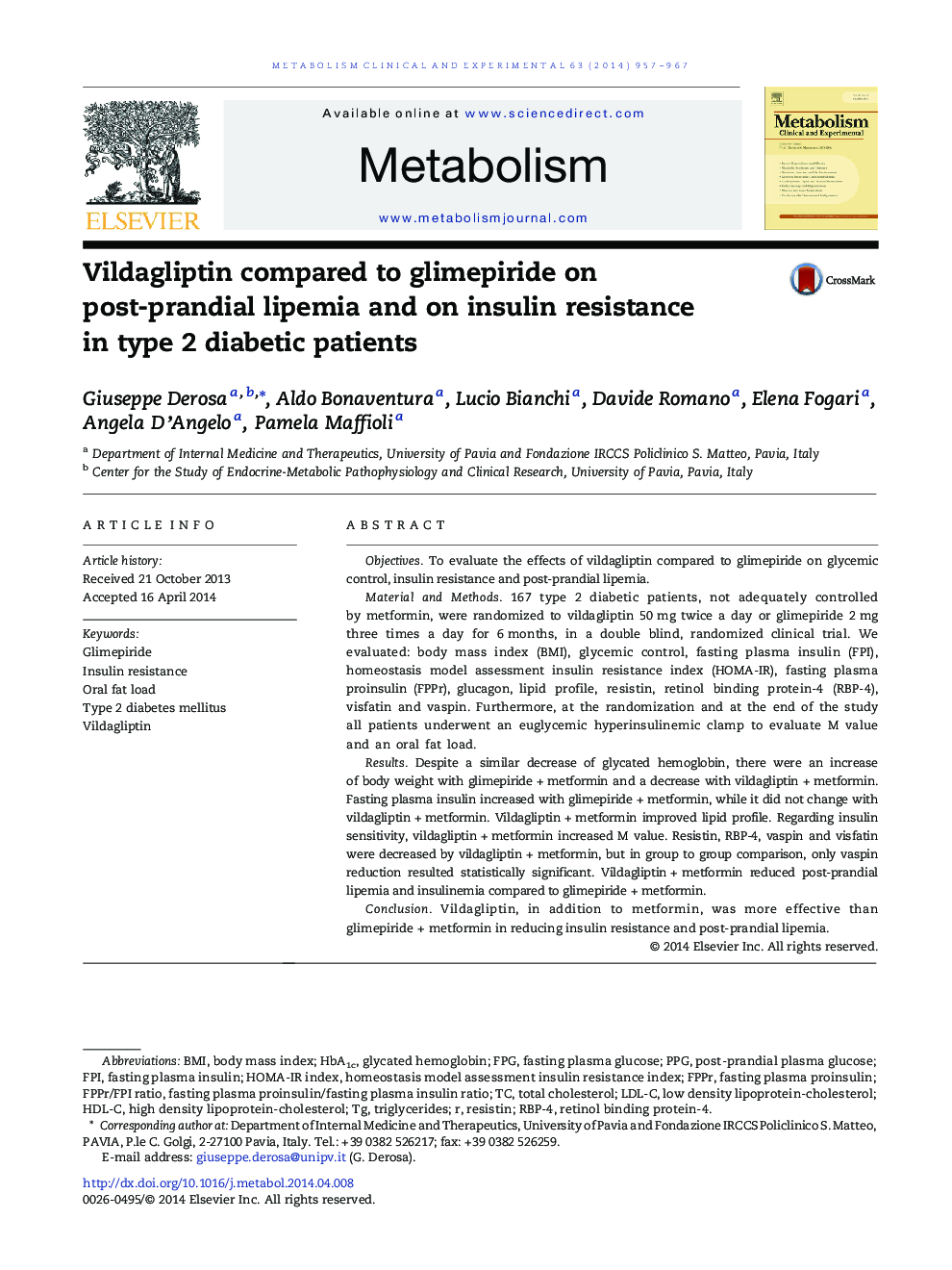| Article ID | Journal | Published Year | Pages | File Type |
|---|---|---|---|---|
| 2805510 | Metabolism | 2014 | 11 Pages |
ObjectivesTo evaluate the effects of vildagliptin compared to glimepiride on glycemic control, insulin resistance and post-prandial lipemia.Material and Methods167 type 2 diabetic patients, not adequately controlled by metformin, were randomized to vildagliptin 50 mg twice a day or glimepiride 2 mg three times a day for 6 months, in a double blind, randomized clinical trial. We evaluated: body mass index (BMI), glycemic control, fasting plasma insulin (FPI), homeostasis model assessment insulin resistance index (HOMA-IR), fasting plasma proinsulin (FPPr), glucagon, lipid profile, resistin, retinol binding protein-4 (RBP-4), visfatin and vaspin. Furthermore, at the randomization and at the end of the study all patients underwent an euglycemic hyperinsulinemic clamp to evaluate M value and an oral fat load.ResultsDespite a similar decrease of glycated hemoglobin, there were an increase of body weight with glimepiride + metformin and a decrease with vildagliptin + metformin. Fasting plasma insulin increased with glimepiride + metformin, while it did not change with vildagliptin + metformin. Vildagliptin + metformin improved lipid profile. Regarding insulin sensitivity, vildagliptin + metformin increased M value. Resistin, RBP-4, vaspin and visfatin were decreased by vildagliptin + metformin, but in group to group comparison, only vaspin reduction resulted statistically significant. Vildagliptin + metformin reduced post-prandial lipemia and insulinemia compared to glimepiride + metformin.ConclusionVildagliptin, in addition to metformin, was more effective than glimepiride + metformin in reducing insulin resistance and post-prandial lipemia.
